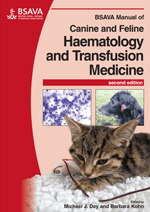
Full text loading...

Anaplasmosis is caused by several species of the bacterial genus Anaplasma that are implicated as emerging pathogens of dogs, cats, ruminants, horses and humans worldwide. This chapter covers Anaplasma species infecting dogs and geographical distribution; granulocytic anaplasmosis; infectious canine cyclic thrombocytopenia; feline granulocytic anaplasmosis.
Anaplasmosis, Page 1 of 1
< Previous page | Next page > /docserver/preview/fulltext/10.22233/9781905319732/9781905319732.19-1.gif

Full text loading...




